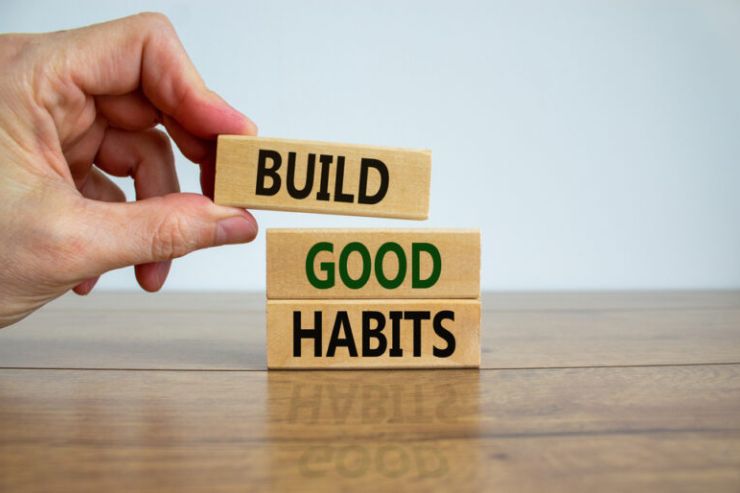Building lasting healthy habits can sometimes feel overwhelming. With so many changes to make, it’s easy to get lost in a sea of “to-dos” and end up accomplishing very little. But what if the secret to success was simply focusing on less? As Leo Babauta wisely puts it:
“The only way you’ll form long-lasting habits is by applying the Power of Less: focus on one habit at a time, one month at a time, so that you’ll be able to focus all your energy on creating that one habit.”
In this post, we’ll dive into the science behind focusing on one habit at a time, explore strategies like implementation intentions and habit stacking, and share practical tips to help you create habits that stick.
The Power of Focusing on Less
Research shows that when you concentrate on changing a single behavior at a time, the likelihood of retaining that habit for over a year exceeds 80%. In contrast, attempting to change two behaviours at once can slash your success rate to less than 35%. This powerful insight is at the core of Babauta’s philosophy: when you focus your energy on one goal, you set yourself up for lasting success.
Six Rules for Creating a New Habit in 30 Days
Inspired by The Power of Less, here are six actionable rules to help you build a new habit over the next 30 days:
- Pick Only One New Habit at a Time:
Trying to form multiple habits simultaneously can dilute your focus. Zero in on one behaviour to maximize your chances of success. - Choose an Easy Goal:
Especially when you’re new to habit formation, start with something achievable. Make your target as simple as possible to ensure you’re setting yourself up for success from day one. - Choose Something Measurable:
Tracking your progress is key. Select a habit that you can easily measure, so you know whether you’ve succeeded each day. - Be Consistent:
Try to perform your new action at the same time each day. Consistency reinforces the habit loop and helps embed the behaviour into your daily routine. - Report Daily:
Accountability can be a game changer. Whether it’s a friend, family member, or coach, checking in daily can keep you motivated and on track. - Keep a Positive Attitude:
Setbacks are part of the process. Instead of dwelling on any “failures,” note them, learn from them and move forward with a positive mindset.
Planning for Success
In Atomic Habits, James Clear highlights the concept of an “implementation intention.” This is essentially a plan that clearly outlines when, where and how you will perform your new habit. For example:
“On Wednesdays at 9am, I will exercise for 45 minutes at my local gym.”
By creating a specific plan, you’re more likely to follow through. Use this simple formula to craft your own implementation intention:
I will [BEHAVIOUR] at [TIME] in [LOCATION].
Having a clear and actionable plan can double your success rate, as research has shown that groups with a set implementation intention were more than twice as successful as those without one.
Habit Stacking
Many of our daily actions are already linked together. This practice, known as habit stacking, provides a perfect opportunity to piggyback a new action onto an existing one. The habit stacking formula is straightforward:

After [CURRENT HABIT], I will [NEW HABIT].
Here are a few examples to inspire you:
- After work, I’ll drive straight to the gym.
- When I eat my lunch, I’ll drink a glass of water.
- After I eat dinner, I’ll go out for a 10-minute walk.
As these linked habits become second nature, you can start adding more actions to form a complete daily routine.
Work ends → gym → stretching → go home → shower → eat a healthy dinner → read a book.
By stacking your habits, you create a seamless chain of actions that support your overall well-being.
Conclusion
Creating healthy habits doesn’t have to be complicated. By applying the Power of Less and focusing on one lasting healthy habits at a time, you dramatically increase your chances of long-term success. Start small with clear, measurable goals, use implementation intentions to plan your actions, and leverage the power of habit stacking to build a routine that sticks.
Remember, every big change starts with one small step.



